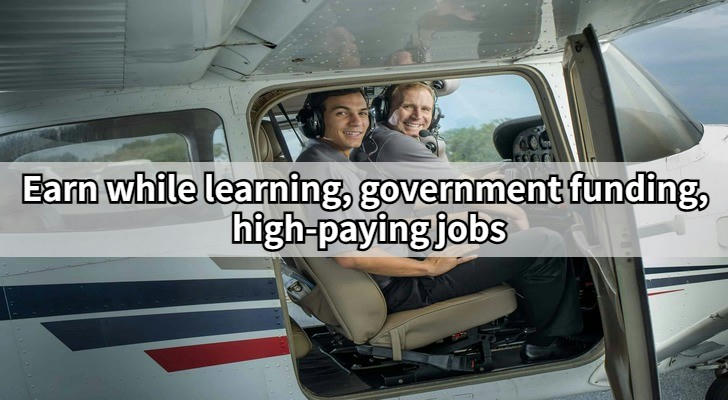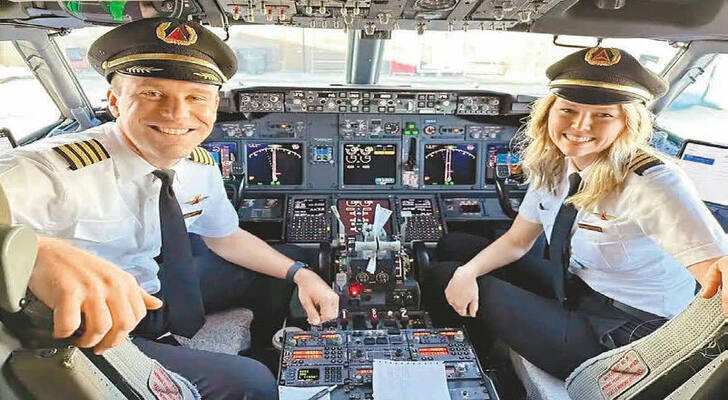Aviation Training Schools: Launching Careers in the Skies
The aviation industry relies on skilled professionals to ensure safe and efficient air travel. Aviation training schools provide globally recognized certifications, "earn while you learn" programs, and government-supported initiatives to make high-paying careers accessible. These institutions are shaping the future of aviation by addressing industry challenges and preparing students for success.

The Value of Aviation Training Schools
Aviation training schools are specialized institutions designed to equip students with the knowledge, skills, and certifications required to excel in the aviation industry. Programs range from pilot training and aircraft maintenance to air traffic control and aviation management. Graduates of these programs often secure high-paying jobs, thanks to the industry's demand for skilled professionals and the rigorous standards upheld by these schools.
One of the key advantages of attending an aviation training school is the opportunity to earn valuable certifications. These certifications, such as a Commercial Pilot License (CPL) or an Aircraft Maintenance Engineer (AME) license, are recognized globally and serve as a passport to high-paying jobs in the aviation sector. For example, a certified commercial pilot can earn an average salary of $100,000 per year, while experienced aircraft maintenance technicians can command salaries upwards of $70,000 annually.
Real-World Case Study: Government Support and "Earn While You Learn" Programs
The high cost of aviation training has traditionally been a barrier for many aspiring professionals. However, governments and industry stakeholders are stepping in to make training more accessible. A prime example is the Philippines' Aviation Training Program, supported by the government and private airlines. This initiative offers scholarships and "earn while you learn" opportunities to students pursuing careers in aviation.
Under this program, students receive financial support to cover tuition fees and living expenses. In return, they commit to working with partner airlines for a specified period after graduation. This model not only reduces the financial burden on students but also ensures a steady supply of qualified professionals for the aviation industry. For instance, a student training to become an aircraft mechanic might work part-time with a local airline while completing their certification, gaining hands-on experience and earning an income simultaneously.
Government Initiatives: Making Aviation Careers Accessible
Government support is crucial in addressing the skills gap in the aviation industry. Many countries have introduced initiatives to encourage more people to pursue careers in aviation. For example, the United States Federal Aviation Administration (FAA) offers grants and scholarships to students enrolled in aviation-related programs. These funds help cover the cost of training, making it easier for individuals from diverse backgrounds to enter the industry.
Similarly, the European Union Aviation Safety Agency (EASA) has launched programs to promote aviation careers among young people. These initiatives include partnerships with aviation schools to provide subsidized training and internships with leading airlines. By reducing the financial barriers to entry, governments are helping to create a more inclusive and diverse workforce in the aviation sector.
High-Paying Jobs and Career Growth
One of the most attractive aspects of a career in aviation is the potential for high earnings and rapid career progression. For example, a first officer (co-pilot) at a major airline can expect to earn between $50,000 and $80,000 annually, while a captain with several years of experience can earn over $200,000 per year. Similarly, air traffic controllers, who play a critical role in ensuring the safety of flights, can earn salaries ranging from $80,000 to $150,000, depending on their level of experience and location.
Aviation training schools play a critical role in preparing students for these lucrative careers. By offering programs that combine theoretical knowledge with practical experience, these institutions ensure that graduates are job-ready from day one. For instance, the Embry-Riddle Aeronautical University in the United States offers a comprehensive pilot training program that includes flight simulator sessions, real-world flight hours, and internships with major airlines. Graduates of this program are highly sought after by employers, thanks to the university's reputation and the quality of its training.

Certification: A Passport to Success
Certification is a cornerstone of aviation training. Whether it's a pilot's license, an aircraft maintenance certificate, or an air traffic control qualification, these credentials are essential for securing high-paying jobs in the industry. Aviation training schools work closely with regulatory bodies to ensure that their programs meet the highest standards.
Conclusion
Aviation training schools are gateways to rewarding careers in a dynamic industry. Through "earn while you learn" programs, government support, and globally recognized certifications, these institutions prepare students for high-paying jobs while addressing industry challenges. They are shaping the future of aviation, ensuring a skilled workforce for tomorrow's skies.
